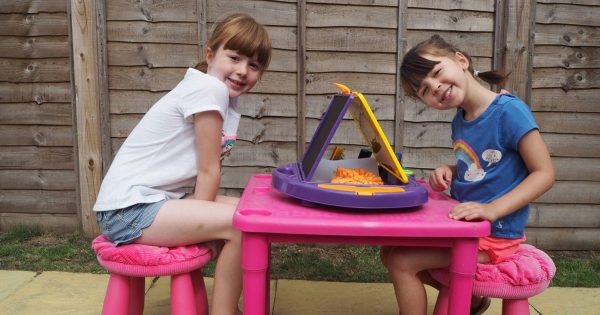Main image as seen on Dear Bear and Beany.
With Little Brian’s Paint Sticks range, children are given endless opportunities to experiment with a variety of materials to fuel their imagination and creativity. Through sensory experiences, they are able to respond to what they see, hear, feel, touch and smell. They can express their feelings and thoughts through colour, texture, shapes and forms in two and three dimensions.
To mess about is to play with something and it is through play – which is part of the creative process – that children learn and develop. Children are being creative when they use materials in new ways, combine previously unconnected materials and make discoveries that are new to them, and messy play enables children to do all these things.
Little Brian’s Paint Sticks collection is the ultimate mess free range of paints suitable for messy play, introducing children to be creative on all sorts of surfaces, including paper, card, canvas, wood and even … glass! A fun, clean, simple and very convenient way to paint, Little Brian Paint Sticks has fast become the latest must have range for any arts or crafts fan! They can even be popped into a travel bag to keep the children entertained on holiday too!
Blending
Apply Paint Sticks colours directly to the surface and blend using a damp brush, cotton bud, cloth or wipe to create colour blending effects, perfect if you want to recreate a beautiful sunset scene.
Washes
Either mix with water or apply directly to the surface and wet with a brush to produce wonderful washes.
Scratchboard
Apply Paint Sticks colours to the surface and leave time to dry. Apply black paint on top of the dry layer. Whilst the black layer is still wet, scrape into it using scraper tools to reveal the coloured paint layer below.
Stamping
Wet the stamp, apply Paint Sticks colour direct to the stamp (or potato!) then have fun and stamp away!
This sort of play is important because its lack of a focus on making or producing something leaves the child free to explore all sorts of possibilities. It taps into children’s inherent curiosity about the world around them and their strong desire to explore and find out more!





